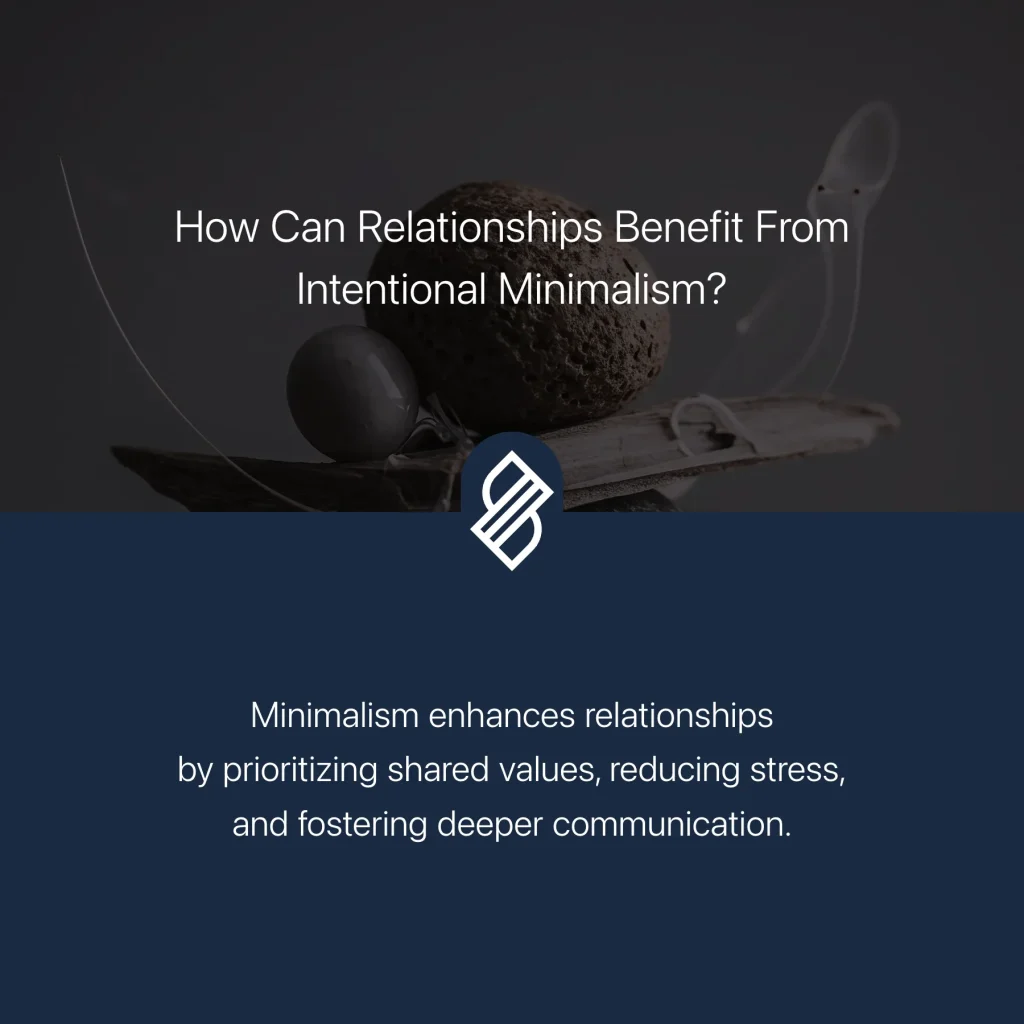Clarity in Communication: The Role of Minimalism in Simplifying Personal Interactions

The Challenge of Modern Communication
The digital age has escalated the amount of information we encounter daily, making it astonishingly easy to become overwhelmed. As we scroll through social media, emails, and messages, it often feels as though clarity is a fading luxury. Clarity in communication has become more than just a goal; it is now a necessity. Misunderstandings can emerge from the simplest of interactions, leading to conflicts in both personal and professional realms. So, how can we alleviate this confusion? One promising strategy lies in the principles of minimalism.
Understanding Minimalism in Communication
At its core, minimalism encourages us to strip down our communication to only the essential elements. This approach can significantly enhance interpersonal interactions by ensuring that our messages are both clear and effective. Below are some key features that embody minimalism in communication:
- Conciseness: Being direct and to the point minimizes ambiguity. For instance, instead of saying, “I would like to inform you about the upcoming project meeting that is going to occur next Thursday,” one could simplify this to, “The project meeting is next Thursday.” This saves time and reduces confusion.
- Focus: Concentrating on one idea or message at a time prevents information overload. In a business setting, introducing multiple concepts in one email can lead to misunderstandings. Instead, delivering separate messages for different topics can greatly enhance clarity.
- Empathy: Considering the listener’s perspective is crucial in effective communication. Adapting our language and approach to suit our audience—whether it’s a colleague, a client, or a friend—can lead to stronger understanding and rapport.
- Visual Clarity: Supplementing verbal messages with simple visuals can be particularly effective. Infographics, charts, or even straightforward diagrams can help communicate complex information in a digestible format. For instance, a visual timeline can clarify project timelines much better than extensive written explanations.
Research supports the notion that clearer communication enhances relationships and diminishes conflict. Studies indicate that individuals are more likely to retain information when it is presented in a simplified manner. Understandably, in environments that are cluttered with data, less is often more. By nurturing a minimalistic approach to communication, we not only reduce noise but also build foundations for deeper relationships, whether at home, in the workplace, or within community settings.
Transforming Daily Interactions
As we navigate our daily interactions—from casual conversations to formal meetings—embracing minimalism can be transformative. It empowers us to communicate with precision and intention, leading to more meaningful discussions. The principles of minimalism encourage us not only to convey messages effectively but to engage in dialogues that resonate and foster connection.
In conclusion, as the complexities of communication continue to evolve, adopting minimalism can serve as an enlightening strategy. By prioritizing clear, concise communication, we can enhance our understanding of one another and foster interactions that are not just efficient, but also enriching. This philosophy invites further exploration into how simplicity in communication can significantly impact our lives—potentially making a world of difference in how we connect with one another.

DIVE DEEPER: Click here to discover more
The Essence of Clear Communication
In a world where speed and volume often eclipse clarity, the notion of clarity in communication is critical to enhancing both personal interactions and professional exchanges. With the proliferation of digital platforms, the potential for miscommunication has increased exponentially. As we type messages, share updates, and join virtual meetings, the need for succinct and direct communication has never been more pronounced. By embracing minimalism in our interactions, we can mitigate the risk of misunderstandings and foster a more cohesive dialogue.
Key Benefits of Minimalism in Communication
Embracing a minimalist approach not only streamlines our messages but also enhances their impact. Here are several key benefits:
- Enhanced Comprehension: When we present information in a straightforward manner, it becomes easier for others to grasp the essence of our message. A clear and concise statement often resonates more with the audience than a convoluted explanation.
- Improved Retention: Studies suggest that people are more likely to remember information when it is simplified. By reducing cognitive load, we allow our listeners to focus better on essential points, fostering stronger retention of the discussed concepts.
- Fostering Engagement: A minimalist style promotes engagement by encouraging dialogue rather than monologue. By asking open-ended questions and maintaining a focus on relevant topics, we invite others to contribute and share their perspectives, leading to a richer conversation.
- Reduced Anxiety: In high-stress situations, such as business negotiations or personal discussions, a clear and concise communication style minimizes frustration and anxiety. Individuals are less likely to feel overwhelmed when the communication is direct and purposeful.
The transformative power of minimalism is evident in various fields. For instance, successful leaders in the corporate world are increasingly prioritizing effective communication. By utilizing straightforward language and avoiding jargon, they not only convey their messages more clearly but also foster a culture of openness within their teams. In personal relationships, employing minimalism can lead to healthier discussions by decreasing the opportunity for conflicts that arise from ambiguity.
Crafting Messages with Intention
To incorporate minimalist principles into our daily interactions, individuals can start by being intentional about their message construction. This involves articulating key points with clarity, choosing words carefully, and ensuring that the core message is evident from the outset. Keeping an audience in mind is vital; understanding their background, knowledge level, and emotional state can significantly change how a message is presented and received.
In exploring the relationship between minimalism and clarity in communication, it is also essential to recognize the profound effect this approach can have on our interpersonal relationships. By fostering clear communication, individuals can deepen connections, inspire trust, and navigate the complexities of personal and professional interactions with finesse.
Understanding Minimalism in Communication
Minimalism in communication emphasizes the importance of clarity and directness in our interactions with others. This approach advocates for the elimination of unnecessary complexities and distractions, allowing messages to be conveyed more efficiently. By focusing on what truly matters, individuals can foster deeper connections and understanding, ultimately enhancing personal relationships.One significant aspect of minimalist communication is the art of active listening. This practice encourages participants to fully engage in conversations, absorbing the speaker’s message without the interference of preconceived notions or interruptions. As a result, conversations become more meaningful, and individuals can express their thoughts and feelings openly, leading to less conflict and misinterpretation.Moreover, visual simplicity plays a crucial role in enhancing communication. In today’s digital age, where information overload is common, adopting minimalist design principles in presentations, social media, and other media forms can significantly improve message retention. Utilizing clear visuals and concise language helps audiences grasp the essential points without cognitive overload, making it easier for them to respond thoughtfully and relevantly.Additionally, adopting minimalistic habits reduces emotional clutter in personal interactions. By focusing on authentic communication and prioritizing quality over quantity, individuals can enhance their relationships. A minimalistic approach promotes transparency and encourages expressing emotions without the baggage of embellishments, allowing for genuine connections that can weather storms of disagreement or misunderstanding.Understanding the role of minimalism in communication is also beneficial in conflict resolution. When disagreements arise, reverting to a minimalist mindset can facilitate finding common ground. By staying focused on the core issues and avoiding unnecessary arguments over peripheral details, individuals can navigate discussions more effectively, leading to resolution and reconciliation.Embracing a minimalist ethos not only simplifies communication but also enriches personal interactions. By incorporating the principles of clarity, active listening, and visual simplicity, we can foster better understanding and build stronger, more resilient relationships in our everyday lives. Now, let’s delve deeper into the advantages of these practices through the following table.
| Minimalism Advantage | Impact on Personal Interactions |
|---|---|
| Enhanced Clarity | Messages are conveyed directly, reducing confusion. |
| Active Listening | Encourages empathy and understanding in conversations. |
| Reduced Emotional Clutter | Promotes authenticity in expressing thoughts and feelings. |
| Conflict Resolution | Focus on core issues aids in finding common ground. |
Incorporating these principles of minimalism can transform the way we communicate, fostering not only greater understanding but also emotional connections that are essential for healthy personal interactions.
DISCOVER MORE: Click here to find out how simplicity can set you free
The Power of Active Listening
To fully embrace a minimalist approach in communication, it is crucial to not only focus on what we say but also on how we listen. Active listening plays a significant role in enhancing clarity and fostering meaningful exchanges. Unlike passive listening, where one merely hears the words being spoken, active listening involves fully engaging with the speaker’s message. This practice encourages individuals to ask clarifying questions, summarize points, and demonstrate understanding, which can significantly reduce the likelihood of miscommunication.
Techniques for Active Listening
Incorporating active listening into our communication style can markedly improve interactions, both personally and professionally. Here are several techniques to consider:
- Maintain Eye Contact: This simple yet effective technique demonstrates attentiveness and respect for the speaker. In a digital setting, this translates to being present in video calls, avoiding distractions, and showing genuine interest in the conversation.
- Ask Clarifying Questions: When unsure about a message, asking questions can bring clarity. This not only aids in understanding but also conveys to the speaker that you value their thoughts and contributions.
- Rephrase the Message: Summarizing or rephrasing what the speaker has said can confirm understanding. Phrases such as “What I hear you saying is…” can invite deeper exploration of the topic at hand.
- Be Mindful of Non-Verbal Cues: Body language, tone of voice, and facial expressions offer additional context to communication. Being aware of these signals enables a more comprehensive understanding of the message being conveyed.
Incorporating these techniques into our daily interactions exemplifies the principles of minimalism by creating a straightforward pathway to comprehension. This method not only eliminates confusion but also nurtures an environment where everyone feels heard and respected.
The Minimalist Approach in Digital Communication
With many personal and professional exchanges taking place over digital platforms, adapting a minimalist strategy becomes even more urgent. Messages transmitted through email, instant messaging, and social media can often contain unnecessary embellishments that dilute the core message. Research indicates that individuals spend an average of 28% of their workweek on emails, and a significant portion of this time is devoted to deciphering unclear communication. By adopting clear subject lines, concise bullet points, and a decisive tone, individuals can minimize the cognitive burden placed upon their audience.
Moreover, using technology’s visual benefits can aid clarity. Platforms that allow for graphic representations or video messages can convey complex information more effectively than text alone. Infographics, for instance, can distill multifaceted data into easily digestible visuals, reinforcing the importance of presenting information simply yet compellingly.
As the demand for clarity in communication grows, companies across the U.S. are realizing the merits of adopting a minimalist approach. Notably, giants like Google and Apple prioritize streamlined communication practices that emphasize directness and understanding. Training programs focusing on concise communication techniques have become commonplace, equipping employees with the tools necessary to navigate the complexities of modern interactions.
Embracing minimalism in communication also impacts workplace culture. Teams that communicate clearly and effectively tend to exhibit higher productivity and morale, leading to overall enhanced satisfaction in personal and professional relationships.
DIVE DEEPER: Click here to learn more
Conclusion: Embracing Minimalism for Clearer Connections
In an age where distractions are abundant and information overload is a persistent challenge, clarity in communication has become more vital than ever. Adopting a minimalist approach not only streamlines our messages but also enhances engagement and understanding during personal interactions. By prioritizing directness, employing active listening, and leveraging digital tools wisely, we can significantly reduce misunderstandings that often derail conversations.
As organizations like Google and Apple have demonstrated, an emphasis on concise communication can lead to improved workplace culture and productivity, indirectly benefiting relationships both within and outside the office. Moreover, as individuals embrace transparency and simplicity in dialogue, they create an environment where ideas can thrive and connections deepen.
It is important to remember that communication is a two-way street. By actively participating in the sharing of thoughts and ideas, we foster mutual respect and understanding. As you consider your own interactions, challenge yourself to eliminate excess and focus on what truly matters. Utilize effective techniques such as maintaining eye contact, asking questions for clarification, and summarizing key points to ensure that your messages are received with utmost clarity.
Ultimately, adopting minimalism in communication is a powerful catalyst for enhancing personal and professional relationships. It invites a sense of openness and respect that leads to more productive and fulfilling interactions. As you embark on this journey towards clearer communication, the benefits will undoubtedly ripple through every facet of your daily life.


